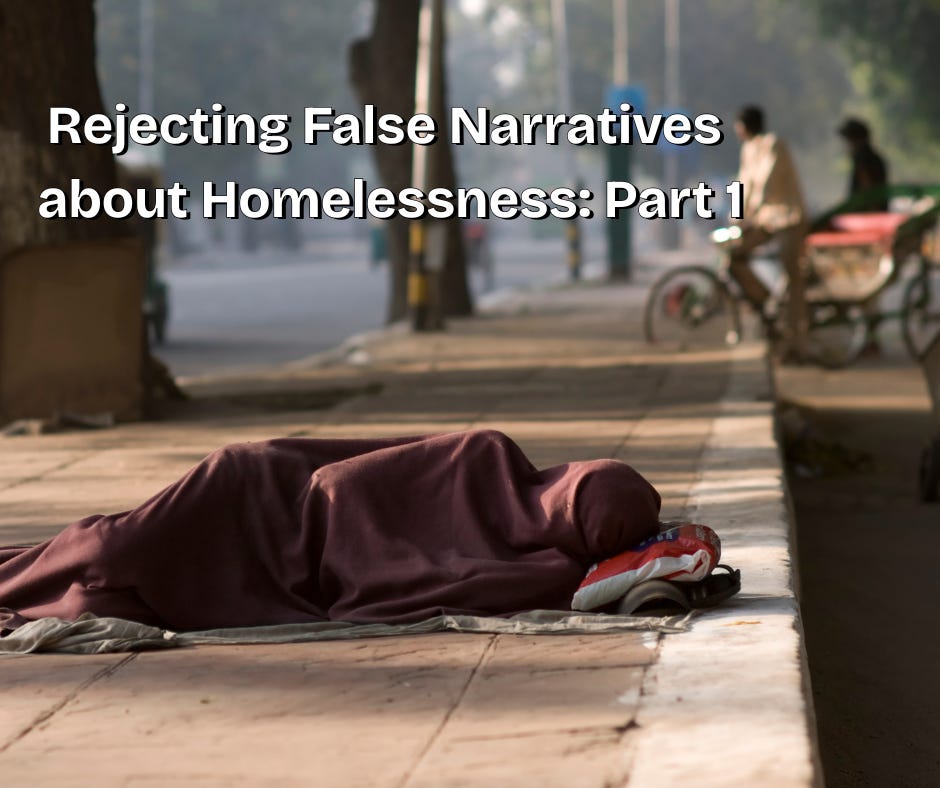Beyond the Myth: How Survival Mode and Mental Health Shape the Reality of Homelessness in America
Rejecting False Narratives about Homelessness: Part 1
It is easier to create a false narrative that places a target on the backs of the innocent than to face and combat real issues. In the United States, one of the most persistent and damaging myths is that people experiencing homelessness are lazy freeloaders, living off “the system” by choice. This narrative ignores the complex realities of poverty and homelessness, and it allows society to avoid addressing the systemic failures that leave so many without shelter, food, security, or community.
The truth is that people experiencing homelessness are surviving in a world where they lack the basic resources to feed and clothe themselves. A variety of individual and systemic factors like economic instability, lack of affordable housing, and inadequate access to healthcare can slip people into homelessness. Once there, the struggle to meet basic needs becomes all-consuming, leaving little space for anything else. And crawling back out of that hole is all but impossible.
As Americans, we often personalize social issues, viewing them through a lens of individual responsibility. This tendency can lead to a defensive mindset, where the unsheltered are seen as a threat or a burden rather than as individuals in crisis. But homelessness is not a personal failing; it is a societal one. People without housing are not focused on stealing or taking advantage - they are simply trying to survive by any means necessary.
When we live in a state of hypervigilance, our brain operates in “survival mode,” a state commonly referred to as “fight or flight.” In this state, critical thinking is nonexistent and decisions are made based on immediate needs rather than long-term consequences. Survival brain does not distinguish between right and wrong; it sees the world in black and white. For many, this state is not temporary but a chronic condition, locked in and worsened by compounded trauma and the relentless stress of surviving on the street.
Mental health issues can convince us that everyone is against us. For people experiencing homelessness, it’s more true than not.
Research underscores the prevalence of mental health disorders among the homeless population. A recent systematic review and meta-analysis, encompassing over 48,000 participants, found that 67% of individuals experiencing homelessness have a current mental health disorder, with the lifetime prevalence rising to 77%—far exceeding rates in the general population. The most common disorders include substance use (44%), major depression (19%), and schizophrenia (7%). These findings highlight that mental health challenges are both a cause and a consequence of homelessness, creating a cycle that is difficult to break without targeted intervention.
The data also reveal that men experiencing homelessness have a higher lifetime prevalence of mental health disorders (86%) compared to women (69%) . This disparity underscores the need for gender-sensitive approaches in both healthcare and housing policy.
The burden of psychiatric morbidity among the homeless is substantial, yet healthcare services often fail to meet their needs. The high rates of substance use and severe mental illness among this population demand coordinated, compassionate responses that address both housing and mental health care.
Rather than perpetuating myths that blame individuals for their circumstances, society must recognize homelessness as a public health and social justice issue. Effective solutions require investment in affordable housing, accessible mental health care, and supportive services that help people rebuild their lives. Only by confronting the real issues and rejecting false narratives can we begin to make meaningful progress.
Sources:
News: Analysis examines prevalence of mental health disorders among homeless
CDI Strategies - Volume 18, Issue 18
May 2, 2024
Psychiatric Disorders and Homelessness
Eugene Rubin M.D., Ph.D
June 20, 2024



